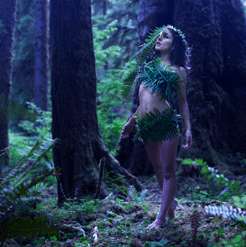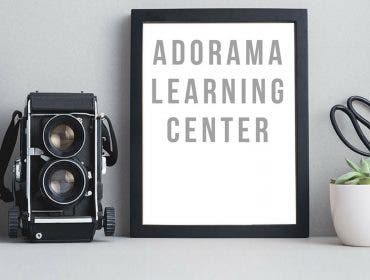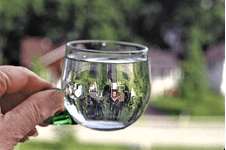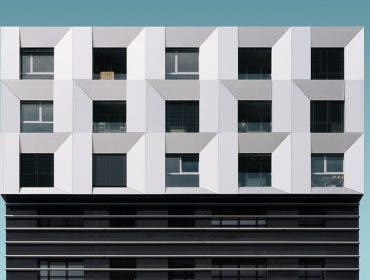Brooke Shaden, fine art photographer and author of “Inspiration in Photography” from Focal Press, offers tips on honing in on your creativity.
We all know the power of a great idea hitting us from nowhere or a beautiful daydream sucking us in whole. This is the type of inspiration that is wonderful to experience, but is often fleeting, and impossible to control. What happens when a client needs a photograph in a hurry and no ideas come to mind? What happens when life takes over and things do not work out as planned? What happens when our usual method of brainstorming fails and there is no time left to sit and wonder?
The answer to these questions is the answer to how we de fine inspiration. I believe that there is no clear de finition for what inspiration is, and even less of a concrete method of how to find it. Inspiration is everywhere. We just have to look for it.
To start, figure out what you love at the most basic level. If you could photograph anything in the world what would that be? From fi nding meaning in every little part of your daily routine, to looking back on memories to find stories you can use, potential inspiration is part of your whole life if you choose to open your eyes to it. When you are honest with yourself and take a step back to reevaluate yourself as a person, then you will find out who you are as an artist.
When thinking about what I could do if I could do anything, the answer came to me at once – underwater photography. I spent a day creating several underwater images. I had no idea how to work underwater, but I figured it out as I went along and it has turned into a particular photographic passion of mine.
 |
 |
Reverse engineer your dreams. Turn your dreams or nightmares into a photographic moment. For example, let’s say I’m daydreaming about running through a forest—I’ll deconstruct that. Where is this forest I can shoot? What would I be wearing? What colors are in my wardrobe? What angle should the camera be at? Make lists, make paragraphs of words. You need to work backward; deconstruct your thoughts and put them into terms you can understand.

One of the exercises I lay out in my book “Inspiration in Photography” is to deconstruct an image. Break it down into prop, location, wardrobe, color. These are four basic categories most images will use. Write down these four categories and then write every word that comes to your mind for each category. Prop: cat, blanket, tree, leaf. Color: purple, red, green, orange. You get the picture – no pun intended. By the end of two minutes, you have all these words laid out that were already in your mind. Once those are written down you can see very clearly what your mind is working on. Simply choose one word per category and then you have a photo idea.
Instantly, you have an idea you can expand on and grow and make your own. This free association process is a great way to think and dream outside of yourself for a moment.
 |
 |
Find inspiration in everyday objects. Take a chair for example. It’s an object almost everyone across the world will encounter every day in some form or another, and with which everyone has different associations. The key is to be able to look at an everyday object in a new light and use it as a springboard for inspiration.

Consider the following questions:
Examine the shapes of the chairs in your environment. Reduce them to their component parts and consider each individually. What do the parts remind you of?
Is there some symbolism to each part of the chair? To the seat, legs, back or arm rests?
What uses can a chair be put to? How could you incorporate each use into your photography?
Personalize it: What memories do you have of chairs? Are these memories positive or negative?
Is there a specific chair that has more meaning to you than others?
The answers to these questions will be varied and the results will show you how your mind works.
From answering each of these questions, you will not only have analyzed in depth an object that you pass by every day, but you will also have the foundation built to start creating images from this inspiration.
The first time I challenged myself to find inspiration in everyday objects, I stared at a tissue box for nearly an hour before finding inspiration. My problem was that I had been looking at the tissue box too literally. I was asking myself, how I could use a tissue box in one of my photos. The deciding moment came when I finally looked beyond the object itself. I looked into my past and thought about memories that I have around tissue boxes, and looked at the actual box and likened it to a home with the tissues as little blankets inside. Suddenly a theme began to emerge of what home (and care and comfort) meant to me. And all this came from contemplating the most ordinary of objects.
Break up your routine, break out of your comfort zone. Once there, make an effort to notice things that are new and unusual; this is grist for the inspiration-mill.

Pick a direction and drive. Drive 20 to 30 minutes or an hour. See where you end up. No matter where it is, be it an alleyway or the desert, ask yourself to be inspired by it. There is something unique in every location, something new to be seen. I usually carve out three hours – one-hour driving there, one hour driving back, and one full hour at a location shooting or gathering ideas. I might not come up with anything usable, but at least I got my brain working and I have a new location to work with.
A good example is when I decided to drive into the middle of nowhere with a friend. I didn’t tell her much; only that we were going to explore middle California. We ended up finding some interesting train tracks. I decided to photograph them, and in doing so was able to use that experience as direct inspiration for a shot. Just by surrounding myself with places that I was unfamiliar with, I was inspired by everything I saw.
 |
 |
 |
To be able to find inspiration at the drop of a hat can be the difference between feeling fulfilled and feeling like something vital is missing in your life. Often the difference between the two states is paper thin, and getting from one to the other is as simple as flipping a switch in our minds. The ability to see the word in a different and more inspiring way is something worth aiming for, because if we can achieve this, then our creativity will have no bounds.
Brooke Shaden — one of the most recognized names in modern art photography — reveals more techniques and exercises that you can use to be inspired by your environment, every day, everywhere in her latest book “Inspiration in Photography” from Focal Press.

To learn more about Brooke visit www.brookeshaden.com/gallery.




